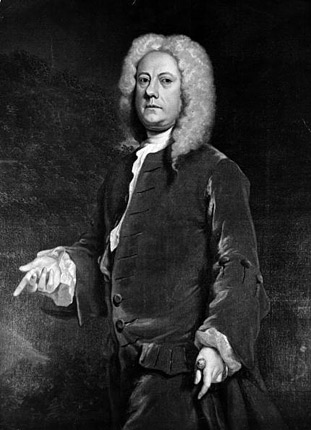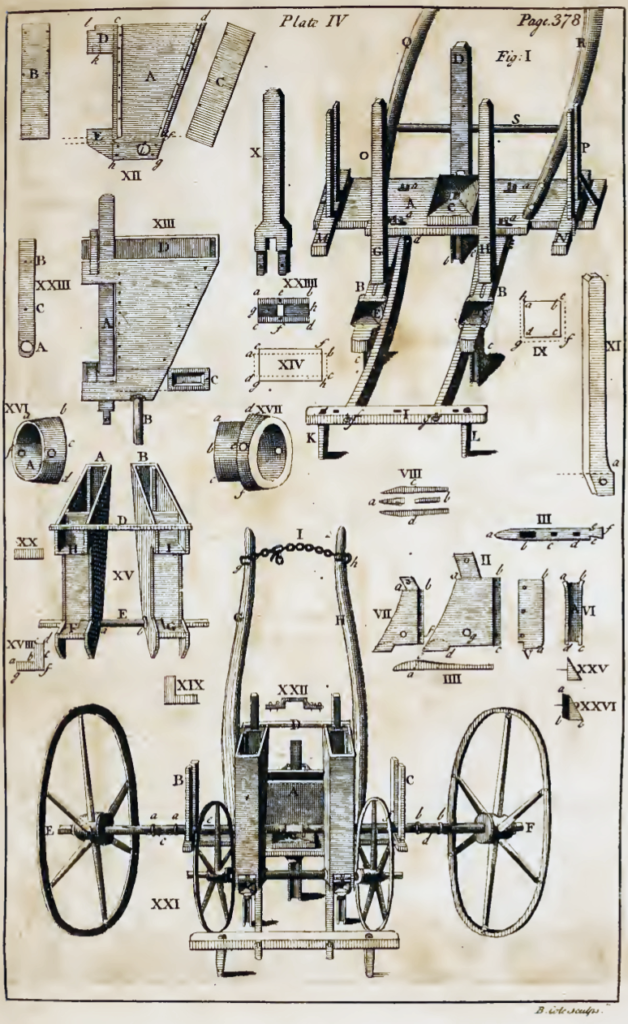Several key historical developments occurred in Europe between the seventeenth and early nineteenth centuries, marking the transition to the modern world.
In the political sphere, a constitutional monarchy developed in Britain along with revolutions in America and France. The Scientific and Medical Revolutions were essential factors in the intellectual development of the modern world. And in the material world, the two significant phenomena which mark the transition from the early modern to the contemporary world are the Industrial Revolution and the Agricultural Revolution.
The latter was pivotal in changing the demography of Europe. For example, between 1650 and the early nineteenth century, the amount of food one agricultural worker could produce in England tripled due to new farming methods such as crop rotation. New agricultural instruments were also pivotal in these changes, none more so than Jethro Tull’s seed drill.

Sowing Seeds Before Jethro Tull’s Seed Drill
For most of human history, seeds have been sown manually by farmers. At its most basic, this involves dropping seeds on the ground. One can place individual seeds in the ground and cover them with a slight amount of soil, but this is a laborious and time-intensive method, which is unsuitable for sowing seeds across large farms.
As such, the preferred method of sowing was hand broadcasting, whereby farmers scattered large amounts of seeds by tossing them at regular intervals across a field. They would prep the soil before scattering the seeds, and after they were, harrow the ground to cover the seeds slightly.
The idea was that, while many seeds would not take root, such as the volume scattered, some inevitably would, and these would emerge as crops come to the harvest.
In practice, this was as wasteful and unscientific as it sounds, and it is incredible that it would take until the eighteenth century for a more effective method to emerge. However, primitive seed drills had been used in ancient Sumer and China thousands of years earlier.
Who was Jethro Tull?
The Sumerian and Chinese seed drills never went into widespread use. That would not occur until the eighteenth century. The man who would invent the modern seed drill at this time was Jethro Tull. Tull was born in England in 1674, just as the Scientific Revolution entered its stride and inventions of all kinds began to emerge.
Tull trained as a lawyer, but a serious pulmonary disease hampered his legal career. This led him to travel to Montpellier in France, the home of Europe’s oldest medical school, which had been established in the High Middle Ages.
While convalescing in southern France, Tull occupied himself by studying agricultural techniques in the region and comparing them with those used in his native England. It was from this work that he would develop the first modern seed drill in the early eighteenth century.
Jethro Tull Invents The Seed Drill
Tull is believed to have invented his first seed drill in 1701. Further innovations and tweaks over the next three decades resulted in the full Tull seed drill by the early 1730s. This was a machine that mirrored a large plow.
It had two wheels and was drawn by a horse. The machine was on a rack between the two wheels and had instruments which reached down to the ground to hoe the soil. A box of seeds was fitted here as well.

Above this was a machine that effectively released seeds at regular intervals using various mechanisms and did so uniformly so that individual seeds were planted a few inches under the soil at regular intervals. A complex system of funnels and cavities was involved in this to ensure seeds were released regularly through the base.
Using this machine, a farmer could plant his seeds in a more secure fashion under the soil and in a more uniform way. This would result in a field in which rows of crops grew evenly, whereas a medieval field would have had crops often growing in a much more haphazard fashion at irregular intervals.
The Impact of the Seed Drill
Tull’s seed drill’s invention enormously improved seed germination in British agriculture. Now the seed was more firmly rooted in the soil, was spread evenly and in an optimum way around fields, and was not exposed to the air where birds could swoop down and eat it.
Moreover, because the seed was placed more firmly underground, it made it easier to weed fields without the risk of disrupting the seeds. Furthermore, because the seed drill laid out seeds more uniformly when the crops started to grow above ground, it was easier to hoe around them uniformly.
All of this improved agricultural yields and played a major role in the increase in agricultural productivity in Europe during the eighteenth and early nineteenth centuries. Overall the Agricultural Revolution, to which Tull’s seed drill made a considerable contribution, led to enormous changes in Britain.
As the amount of food that every agricultural worker could produce increased, Europe moved for the first time in centuries from being a subsistence economy to one in which a surplus of food was being produced after everybody was fed.
As a result, the population began expanding. For example, in Tull’s native England, the population nearly doubled from about five million people in 1700 to nine million in 1800.
Moreover, the health of the living improved as malnourishment was reduced. But the increase in food yields and population levels were not the only changes inventions like the seed drill created in eighteenth-century Britain and then Europe. Instead, it was a domino effect.
The increase in the population level created a huge number of people who entered the labor market. And because fewer of these people were needed to work on farms owing to productivity increases over the eighteenth century, many were available to begin working in the first industrial factories which emerged in England in the 1760s and 1770s.
Thus, the Agricultural Revolution, primarily driven by inventions like Tull’s seed drill, was a necessary precursor to the Industrial Revolution, as it freed agricultural workers to go and work in other parts of the economy. Thus, Jethro Tull’s seed drill had an impact in more ways than are immediately apparent.
Sources
Gordon E. Mingay, ‘The “Agricultural Revolution” in English History: A Reconsideration’, in Agricultural History (1963), pp. 123–133.
G. E. Fussell, Jethro Tull: His Influence on Mechanized Agriculture (London, 1973).
Laura B. Sayre, ‘Jethro Tull, the invention of the seed drill, and the foundations of modern agriculture’, in Physics and Chemistry of the Earth Parts A/B/C, Vol. 35, Nos 15–18 (December, 2010), pp. 851–859.
P. K. O’Brien, ‘Agriculture and the Industrial Revolution’, in The Economic History Review, Vol. 30, No. 1 (Feb., 1977), pp. 166–181.

